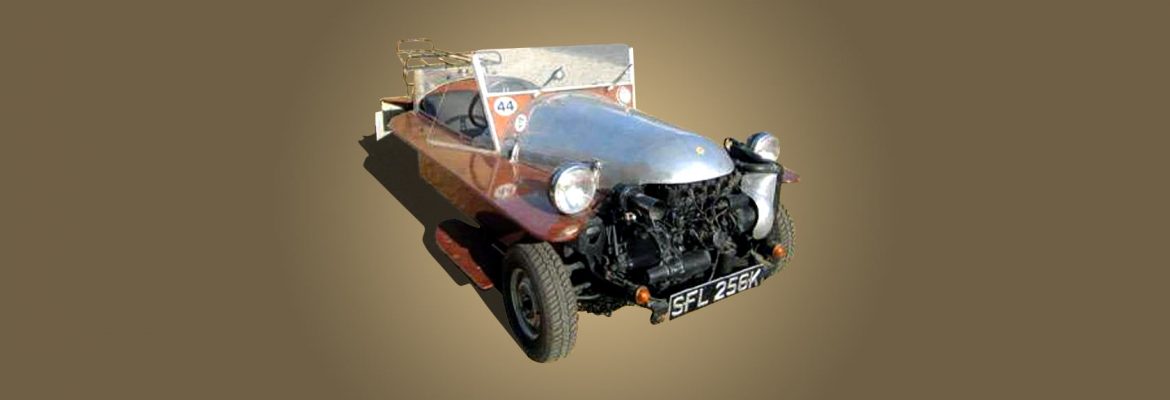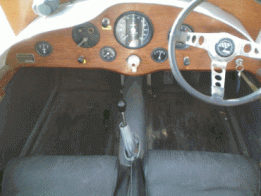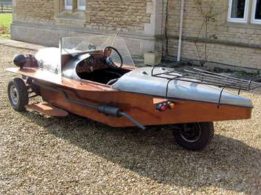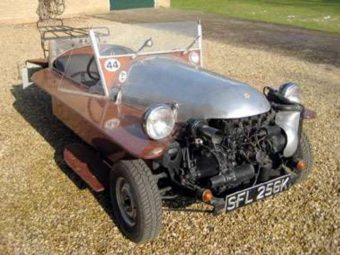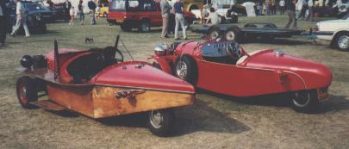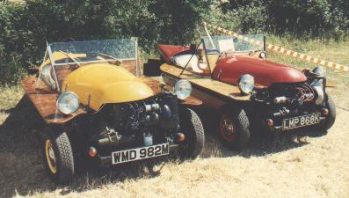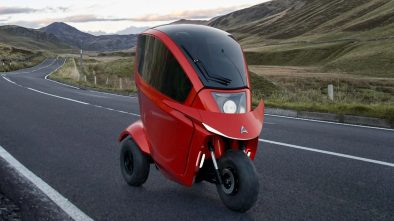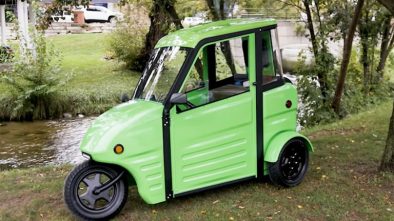A.F. Spider
Back in 1969 an injured ankle resulted in the birth of a very unusual car. It allowed Alexander (Sandy) Fraser enough time off work to design a car that had been forming in his mind for some time. This car was to have all the character of an old three wheeled Morgan, yet be practical for every day use. Twenty thousand miles a year having proved a little much for the genuine article.
The car was to be based around a B.M.C. Mini front subframe, engine unit, and running gear. During a previous job with the people that put the Cooper into Mini Cooper Sandy had the idea that the Mini unit could be ideal for use in a three wheeler and had also provided the knowledge of how to make Mini engines go very well.
The bodywork was to be mainly wood, with no metal chassis apart from the front Mini subframe and a small fabricated mounting for one Mini trailing arm at the rear. The concept was simple, a hardwood frame, skinned with (mahogany faced !) marine ply forming a simple box structure with a hole in the top for the driver and one passenger. Full length wings were added to provide mudguarding and a tail tapering to a point to cover the rear wheel.
The prototype was constructed in the kitchen ! On seeing all the nice wood going in the neighbours thought that a splendid new kitchen was under construction. Little did they know…

The prototype supercharged AF Spider in ‘as found’ condition together with another AF Spider
The prototype was fitted with a 1275 cc engine and a Shorrocks supercharger ! The bodywork was finished using shaped aluminium panels over the bonnet and tail areas. The cockpit was exstensively equipped with many instruments and controls. These included the usual items such as speedo, revcounter, oil pressure guage, together with other items such as a clock, dash mounted engine oil level check, and a cruise control ! To allow it to travel long distances between refuelling a 22 gallon alloy petrol tank was fitted ,and a tow bar was added to take a trailer. The engine was left exposed in the traditional Morgan style.
The car turned out to be fast, flexible, safe and was endowed with excellent handling. Unfortunatly it turned out to be a little over the eight hundredweight limit that applied to the U.K. tricycle taxation class at the time. (This limit has since been metrified which has added about a quarter of a hundredweight to this class).

Rear view of an AF Spider showing pointed tail
Back at work at Antique Automobiles/The complete Automobilist people were impressed and a second car was commisioned for one of them. After it was built it was road tested by both Motor and Autocar. They both published very favourable road tests and including the makers comment “yes it does go very well, I suppose we should build a few…”
Initially the car was to be called the A.F. AB1 but this was quickly changed to A.F. Spider. It was originally intended to sell the car as a complete body unit ready to bolt on the oily bits from a Mini. The production model differed in a number of ways from the prototype. The instrumentation was a lot sparser, a nine gallon tank replced the twenty- two gallon item which in turn left space for a small luggage compartment behind the seats. The aluminium panels became glass-fibre and the lower wings/running boards shrank. It now just scraped into the tricycle taxation class weight limit.

The 1974 Spider (yellow) and the Spider that was originally LHD (red)
Sandy Fraser then split from Antique Automobiles and formed his own company A.F. Cars. The body units that had previously been constructed at Antique Autos were built up into complete cars, none having been sold as kits, and further cars were built. Two dealers were appointed to sell the cars, one of which was B & R Motors of Hounslow. A left hand drive prototype was made, this was later converted to right hand drive before being sold. this car is distinguishable from the others by its mirror image construction (the tank, wiring, trailing arm, and ancillary components all mounted on the opposite side to its sister cars. Another car was “flocked” giving it a furry animal appearance making the car look even odder when dry and like a drowned rat when wet.
At some time production was moved from Lincolnshire to Wiltshire.
